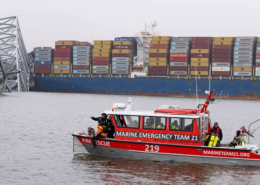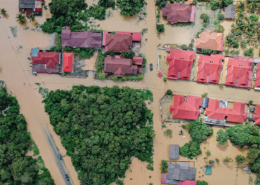The Pre-dive Safety Checklist
By: Robert Shields
The pre-dive safety checklist is a critical component of a public safety dive scene operation. Think about this, airline pilots conduct a pre-flight checklist before every flight. EVERY FLIGHT! This is done to identify safety concerns, review operational procedures, and identify what to do in an emergency, just to name a few. These are all very similar to items that should be covered in the pre-dive safety check.
Studies have shown that using a written/printed checklist is more effective than using a memory aid alone. Albert Einstein once said, “Why commit things to memory when you can write them down”. This is a perfect adage for having a printed checklist. The checklist should have sections for the operating dive team which includes the primary diver, safety diver, and when used, the 90% diver. It should be signed and dated by the tender and included not only in the incident record, but each diver log as well.
Using the numerous mnemonics from different dive agencies, a team can develop their own checklist. It should also include specific PSD checks, such as redundant air supplies, cutting tools and locations, harnesses and hardware, full face mask (FFM) checks, comms checks, operational plan review, line signal review, and emergency procedures review.
At a minimum, the checklist should include:
- Air Checks – Includes checking the tank valve and ensuring the regulators/FFM function. Document starting air pressure in primary tank. Check redundant air supply and regulator function. Document starting redundant tank pressure.
- BCD/BP&W – Checking all releases including the tank strap, ensure the low-pressure line is connected, inflate with power inflator, deflate with each of the dump valves.
- Weights – Document how much weight diver has on and how it is worn (integrated, belt, or harness). Touch the releases/dumps to familiarize locations.
- Exposure Protection including gloves, boots, and hood. Check dry suit inflator and exhaust valve
- Equipment – Cutting tools and locations (minimum 2), harness with break-away shackle (no break away for ice diving), mask, fins, primary and back-up dive lights, and spare mask if diving FFM
- Review the objective – Rescue vs. recovery
- Review line signals and communication procedures
- Review emergency procedures
As the tender goes through the checks, the three divers on that team should check each other so they are familiar with the equipment and where it is located.
This is only a partial list of items to include. Each department/team should develop their own checklist based on their operational guidelines.
It takes about two minutes to complete the check. Two minutes could mean the difference between life and death.








 Photo By: Defense Visual Information Distribution Service
Photo By: Defense Visual Information Distribution Service
Leave a Reply
Want to join the discussion?Feel free to contribute!